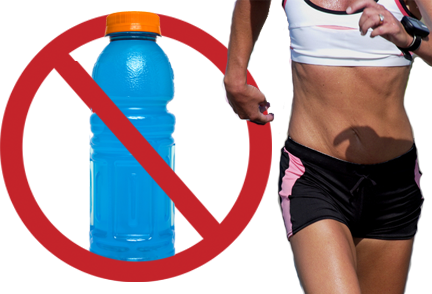 Old style nutritionists advise athletes “load up” on excessive amounts of carbohydrates before an event because they feel this will fill the body with long term energy. The tactic behind carbohydrate loading is to jam-pack muscle and liver cells with stored carbohydrates (glycogen), a strategy that feeds the muscles and starves the nervous system.
Old style nutritionists advise athletes “load up” on excessive amounts of carbohydrates before an event because they feel this will fill the body with long term energy. The tactic behind carbohydrate loading is to jam-pack muscle and liver cells with stored carbohydrates (glycogen), a strategy that feeds the muscles and starves the nervous system.
Hormonal eating advocates have a different perspective because as soon as insulin ushers glucose into muscle and fat cells, it can not escape back into the general circulation. Taking glucose out of the bloodstream is detrimental for the brain and central nervous system, a function which precedes physical movement and athletic ability. The body can move your body after the command of the nervous system.
Another reason extreme carbohydrate loading is not recommended by Core Fat Loss philosophy is because of the accompanying increase in insulin levels which will prevent the release of stored body fat. Fat release provides an immediate high octane fuel source for hard working muscles. The typical fat reserve contains enough energy to supply 119 hours of running whereas carbohydrate storage could only produce 1.6 hours of running. The goal is to burn fat first and save the glycogen for later.
Fat is both energy dense and light in weight, making fat easier for an athlete to carry around when compared to the bulkiness of glycogen (carbohydrate storage). Bloatedness and weight gain always accompany a meal that contains a high glycemic load. For every one unit of carbohydrate that gets stored, the body requires 3 water units.
A forth argument against carbohydrate loading is that elevated insulin instantaneously decreases blood flow by activating certain hormones (eicosanoids) that promote vasoconstriction, decreasing the circumference of the arteries that carry and transfer oxygen to all the cells of the body. Less oxygen equals less endurance.
American marathons runners are often criticized for doing poorly against foreign runners because Americans follow the advice of the event sponsors. Sport drink companies use advertising propaganda, causing athletes to worry more about electrolytes than blood sugar control. The average sports drink contains 56 grams of carbohydrates and is no different than having Kool-aid with added electrolytes (sodium, potassium and chloride). The types of carbohydrate (sugar) found in sport drinks have an extremely high glycemic index (95), which is almost as high as if someone was to drink pure glucose (100). Consuming high glycemic foods and drinks prior to an athletic event causes reduced sports performance as soon as a half an hour into the event. On the other hand, eating low glycemic meals prior to exercising increases stamina, promotes fat burning and causes muscle and liver cells to use up glycogen at a slower pace.
Hormonal Eating does advocate glycogen loading; however we take the moderate approach. There are other ways to fill your glycogen without the use of extremely high glycemic carbohydrates such as sports drinks, power bars and performance gels.
Instead of eating meals dominated by too many high glycemic carbohydrates, Hormonal Eating advocates suggest athletes eat larger-than-normal meals leading up to the event as a way to increase glycogen without driving insulin levels through the roof. Each meal should consist of a balanced ratio of protein, carbohydrate and fat to stabilize blood sugar and maximize performance. Your protein should be an easily digestible source such as eggs or fish.
Recommending high fiber carbohydrate sources (such as whole grains, oatmeal, fruit) would be a mistake because high fiber foods draw water out of the body and into the intestines. To fuel your body for endurance events, Hormonal Eating concepts recommend low glycemic, low fiber food with a potentially high glycemic load. Examples include pasta, Uncle Ben’s® converted rice, sourdough bread, English muffin, or Red Bliss (or New) potatoes. This way you can ride a little higher with the insulin response without going over the edge.
Endurance athletes are also advised to increase the amount of monounsaturated fat in their bloodstream prior to an event as a way to increase fat availability. This can be accomplished by snacking on nuts before the race. You can only fat-load as soon as insulin levels get too high, they will block the availability of fat. The goal of hormonal eating is to maximize endurance is to burn fat first and glycogen later. A balanced 200 calorie snack is also recommended an hour before an athletic performance to act as a blood sugar touch up. In addition, it is advised to allow at least two easy or rest days pre-event to keep muscle glycogen stores as full as possible.